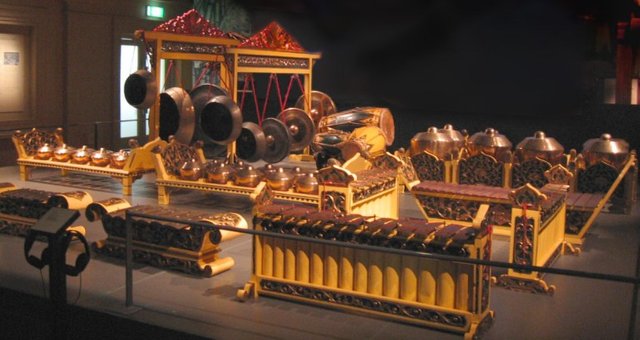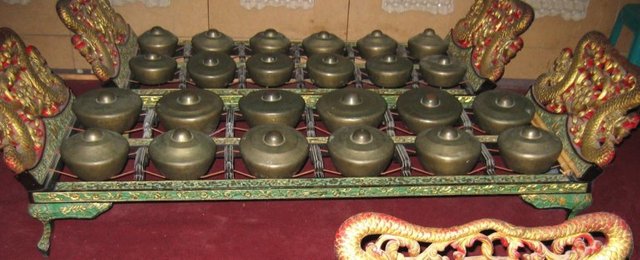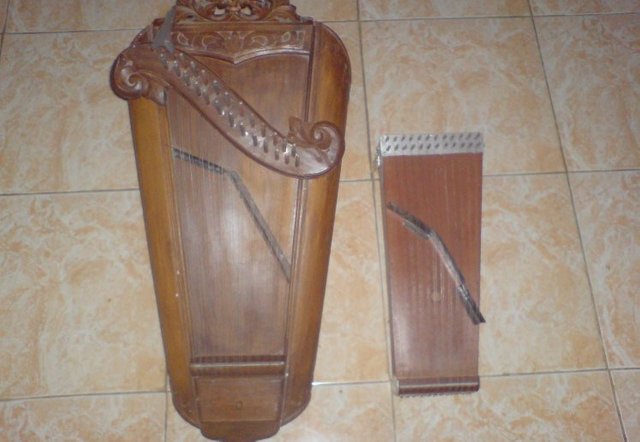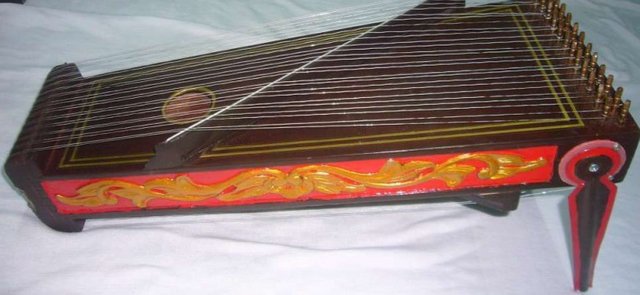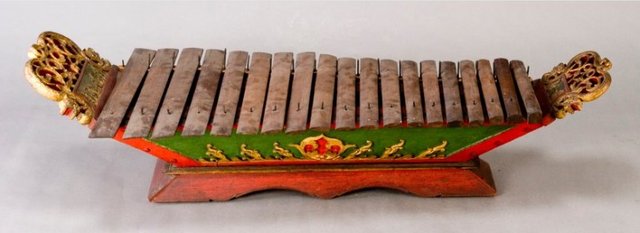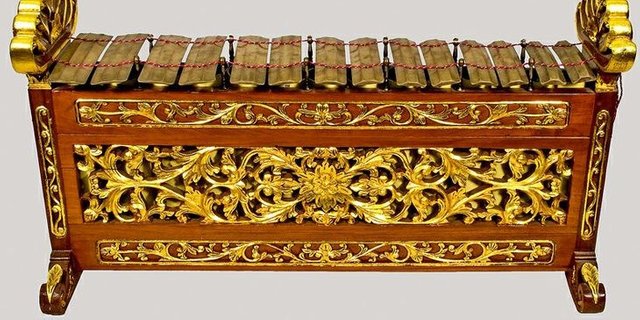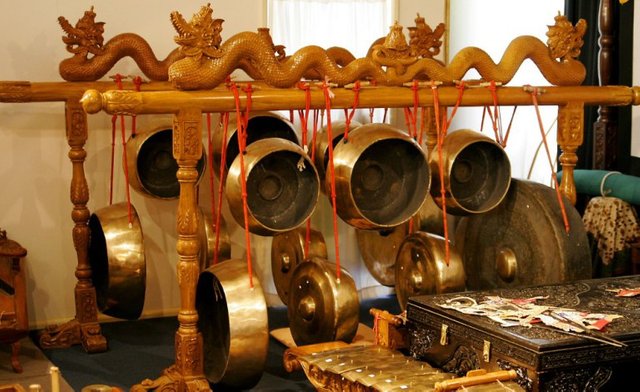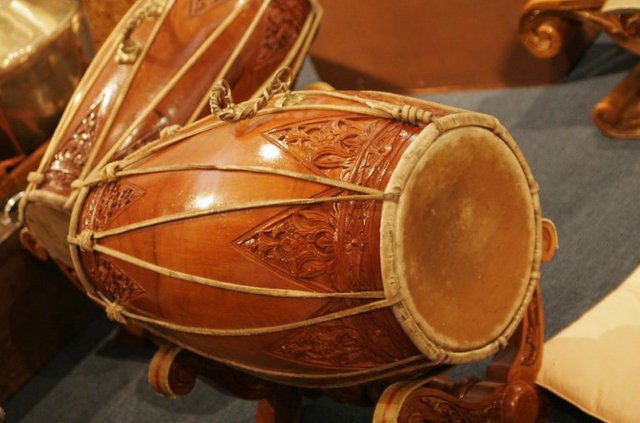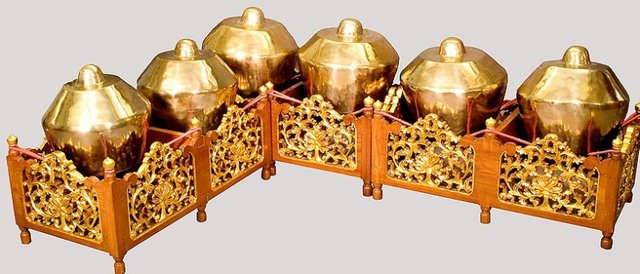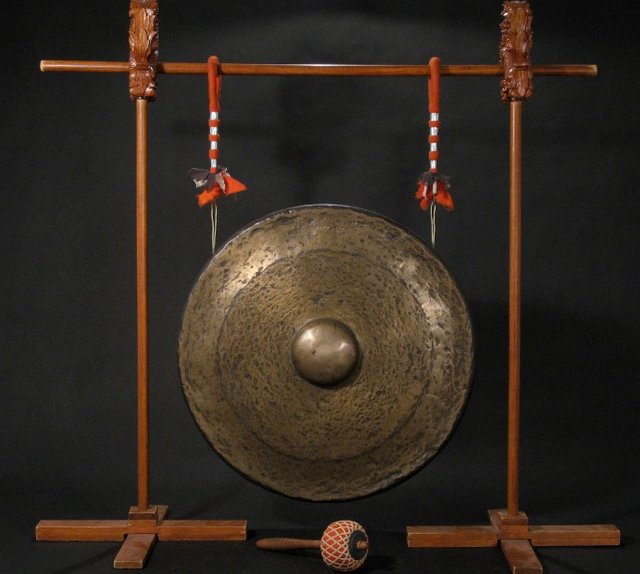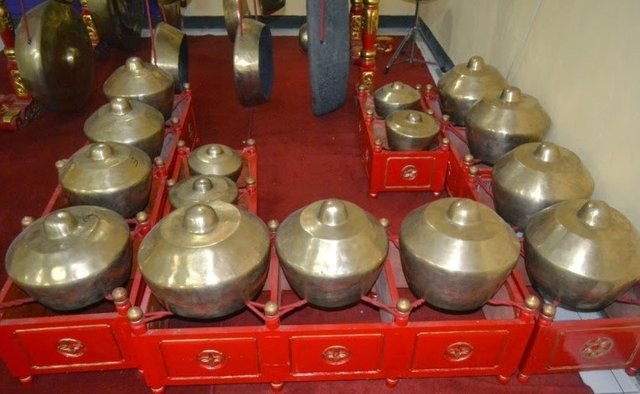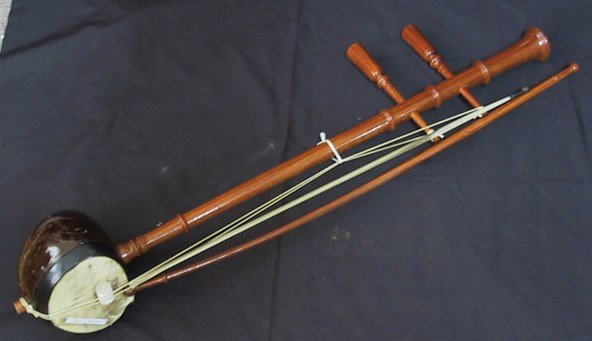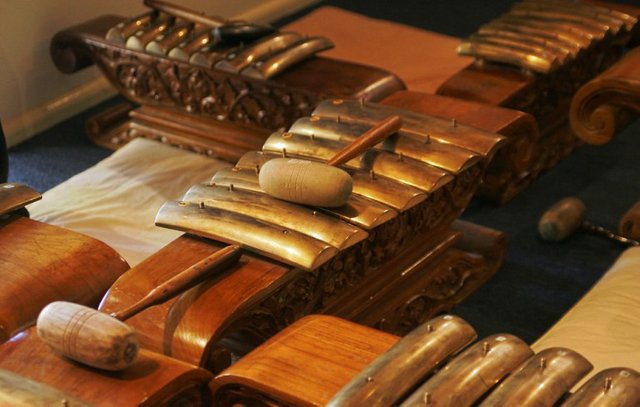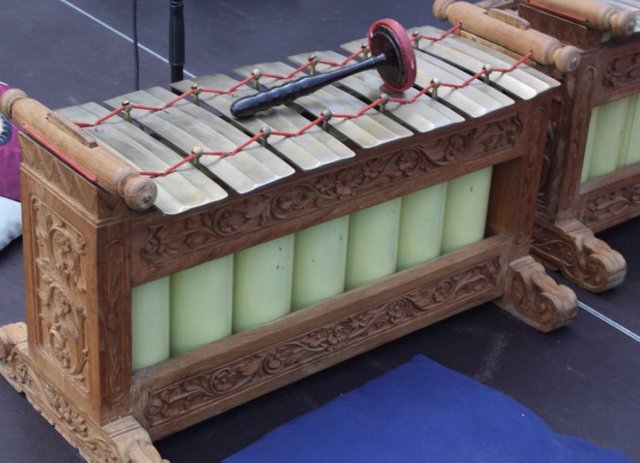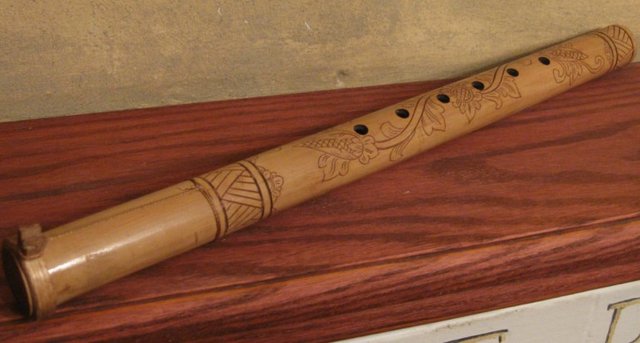The Types And History Of The Javanese Gamelan
Knowing The Types And The History Of The Complete Javanese Gamelan
Kinds and History of Javanese Gamelan - As one of the rich countries of tradition, Indonesia certainly can not be underestimated. Various kinds of art both dance and type of musical instrument-there are also many in number. Well, one of the most famous musical instruments is the Java Gamelan.
Yes, various Javanese gamelan also consists of several types, but to be able to play the Javanese Gamelan at least in need 13 to 15 people so it can be used to accompany the song or Gending Java.
KINDS AND HISTORY OF JAVANESE GAMELAN
As a good Indonesian citizen of course we should at least know and better if you want to learn the arts and musical instruments relics of antiquity. In addition to preserving the culture can also be a shield so that our nation's wealth is not in the claim by other countries. Well, for those of you who have been curious to know the various kinds and history of Javanese gamelan can listen to the complete information below:
KNOW WHAT IS A JAVANESE GAMELAN
When we talk about the Java Gamelan is actually one of the typical musical instruments that exist in the land of Java. The various Javanese gamelan in general include Kenong, Gong, Gambang, Siter and several other tools. But the specialty of this instrument is the sound produced so soft that it can bring calm to anyone who listens.
So the sound produced in ancient times was harmonized with the habits and principles of the famous Javanese very soft. But actually there are still many musical instruments that come from Java but maybe for more details I will discuss in the next article.
THE ORIGIN OF GAMELAN'S NAME
Etymologically, Gamelan itself comes from the Javanese term which consists of two words namely "Gamel" and "An". So "Gamel / Nggamel" means to hit or beat, while "An" is a suffix that makes it a noun. That is why a person who is playing a Gamelan instrument is usually also called being ngeamamel .
HISTORY OF THE JAVANESE GAMELAN
If we look back to the history of antiquity, it turns out that the Javanese gamelan is just a big Gong. But over time finally added with some small gong which is usually called kempul but still in limited number.
Since then the development of the Javanese Gamelan itself has begun to be seen, as evidenced by the addition of other instruments up to that which we can see now.
In Javanese mythology, the origin of the Javanese Gamelan was created in Era Saka by a god who controls the land of Java or is usually called Sang Hyang Guru. The place of his throne is at Mount Mahendra in Medangkamulan or what is now better known as Mount Lawu. So the god made a gong to summon other gods, but to convey a more specific message he finally created two other gongs to form the embryo of a set of Gamelan instruments.
But actually there is no official information about when the gamelan was first played. However, it is estimated that the emergence of the Gamelan itself almost simultaneously since the existence of Kentongan, tap into the mouth, rebab, friction on the rope until the emergence of metal-defensive instrument.
If we look from the form of gamelan, it seems to have some similarities with musical instruments in India. This is because in the seventh century - XV Javanese ancestral culture received acculturation of a fairly thick culture of the Indian nation.
Gamelan itself also includes one type of musical instrument ensambel which consists of two or more musical instruments are played together. Even these gamelan instruments can also be found in one of the reliefs in Borobudur temple since the 8th century. As for some musical instruments include Kendang, Kecapi, Bamboo Flute, as well as some musical instruments are picked or in friction.
JAVANESE GAMELAN FUNCTIONS
The set of gamelan or Gamelan Ageng is played to present a gending-gending Javanese and to accompany the music when there are performances of dance, ketoprak, wayang either puppet or puppet puppet.
Meanwhile, the presentation of gamelan in karawitan we can distinguish into 2 kinds of strains are:
Soran - This presentation is usually synonymous with a beat that produces tone volume that tends hard and almost all gamelan devices are played except Gambang, Suing, Siter, Rebab and Gender. So this music in the presentation is presented in tempo seseg, antal and responsibility.
Else - Maybe from the name alone we can already guess that for the presentation of this gending is much more slow and smooth and all instruments from the gamelan are also played despite preferring the sound from Gambang, Gender, Rebab, Suling and Siter.
But if we learn more deeply, actually for the second presentation is still divided into several concoctions of which are nyampleng, gadon, gender, siteran and so forth.
In addition to those described above, Gamelan Ageng or a set of gamelan can also be functioned for customary ceremony accompaniment facilities, such as:
GAMELAN SEKATI
Gamelan which also has the name Kanjeng Kyai Guntursari and Kanjeng Kyai Gunturmadu is usually played in the celebration of Sekaten or more precisely when the stairs 5 - 12 months Mulud. So on that date Gamelan Sekati is usually served to commemorate the birthday of Prophet Muhammad SAW and also used to greet the great guests, whether it is when there are sons / daughters of sultan or sakarsa dalem.
The Gamelan Sekati itself consists of:
2 pieces of Gong Ageng
2 Sarong Peking
2 Saron Racik
1 Kempyang
1 Bedug
1 Saron Demung
1 Bonang
GAMELAN MUNGGANG
This gamelan is usually played for the purpose of welcoming the great guest, malemen, rambok tiger, mantu, grebegan and others. In addition, the sound produced from Gamelan Munggang has 3 pieces of tone and consists of 4 concoction instruments that include:
3 Great Bonang
2 Gong
2 Bende
1 Kenong Japan
1 Kendang Penuntung
1 Kendang Gending
GAMELAN COROBALEN
The third type of gamelan is usually played and presented when there is a guest of honor who came.
GETTING TO KNOW THE COMPLETE JAVANESE GAMELAN INSTRUMENT
BONANG
The first instrument to complete the set of Gamelan tools is Bonang. Maybe most of us have often heard but not yet know what kind of shape and how the sound produced. So Bonang consists of 10-14 small gongs lined horizontally and arranged into 2 rows, then the ranks of small gongs are laid and stretched on a rope tied to a wooden frame as the main buffer.
Someone who plays Bonang later will sit in the middle of the instrument by holding 2 pieces stick-shaped stick with a size that is not too long.
According to the resulting tone, size and function, Bonang music instrument can be divided into 3 kinds:
BONANG BARUNG
For the first Bonang type it has a size that is not too large with medium to high octave coverage. In addition Bonang this type is also commonly played as an opening instrument because the tone produced can be a guide to other musical instruments.
BONANG PENERUS
This type of bonang has the smallest size with a very high octave range. Even for this type of puddle, this Bonang is played twice as fast as Bonang Barung. However, in Gamelan instruments, Bonang Penerus is not used as a guide song because the speed and the resulting tone is too high.
CELEMPUNG
If Bonang was played by the way in at, for this instrument Celempung usually played by picking. Actually this still has similarities as well as lute music instruments in Sunda. Characteristic of celempung usually has 4 legs and measuring up to 90 cm and set with the tone under an octave one-way taboo.
Clay players will usually use their fingers to strum the strings especially with the thumb, while the other fingers will withstand vibrations when they are not needed.
SITER
Siter's music is actually one type with Celempung, but the difference lies in the size and number of strings used. So this one instrument has a length of about 30 cm and there are 11 and 13 strings stretched between the resonator box. The two strings will then be set differently, the first for the slendro tone and the second tuned pelog tone.
Siter players are now also increasingly scarce, even in some performances that present the Gamelan as well as sometimes the Siter instruments are not played. As for how to play it is still the same with the celempung musical instrument that is by using both thumbs.
What makes it distinctive actually lies in the resulting melody, in addition to this siter instrument also made in two parts, the top and bottom which both have pelog and slendro tones.
GAMBANG
GAMBANG is one of the instruments of Gamelan which is usually found in a Gambang Rancang and Gambang Kromong orchestra. So this gambang has 18 wooden blades in parallel to a resonator shaped like a boat. While at each end of the resonator is usually made tapered like a pyramid.
Generally Gambang musical instruments made with the number of wooden blades of 17 to 21 in a resonator. The scales produced by each wooden blade are different, but the scales include major and minor tones.
To play a musical instrument Gamelan usually uses two batons, one held by the left hand and the other is held by the right hand. So the shape of the drummer from Gambang is rounded at the end and wrapped with rubber or it could be a cloth, while the rod is an elliptical shaped like a small stick.
As for the wooden blades in Gambang generally made of iron wood or teak wood with characteristics for the highest tone of the form say long and wide while for low tones short, thicker and more narrow in size.
GENDER
Gender is one of the Gamelan devices made of metal and is usually played by beating. So the shape picture of this Gender instrument has several metal blades lined on a rope and tied to a resonator.
The Gender itself is divided into two types:
GENDER BARUNG
This type of gender has a size large enough and has an octave level from low to medium. In addition to Bonang instruments, Gender Barung instruments are also often combined as an opening instrument to accompany a fixed track pattern (Ajeg).
GENDER PENERUS
If Gender Barung is large, it is different with the type of Gender Successor. This instrument is smaller but has octave coverage from medium to high. Although for this type of Gender is not a mandatory device in a gamelan performance but its presence will certainly enrich the taste of the sound produced by a set of Java Gamelan.
KEMPUL
Actually this instrument is very similar to Gong, even the placement Kempul when staging a Gamelan was hung into one, only that the difference is in terms of smaller size.
In terms of function, musical instruments Kempul commonly used and played to provide an important accent on Gendhing songs.
KENDANG
Kendang or also called the Gendang is a musical instrument that is played by the way at the clock and has a function to set the rhythm of the song. So this kendang can be played by using a bat or hand directly. In fact, almost all areas of Java land has Kendang with its own peculiarities.
TYPES OF KENDANG
Kendang with small size called ketipung
Medium-sized kendang is called kebar or ciblon
Kendang Gede or commonly called kendang kalih
Kendang which has good quality and tone generally keep cempedak wood or jackfruit wood, while on the side can use buffalo skin or goat skin. However, both skins can produce different tones, for example goatskin will usually produce high tone beats, while buffalo leather knocks produce a low tone. So the selection of leather done is usually tailored to the needs.
KENONG
As one of the instruments included in the various Gamelan. This Kenong can be played by being beaten using a special bat. So this instrument will act as a filler of harmony or chord in the performance of a gamelan and can also be used to tie a rhythm and become a gatra boundary determinant.
In addition Kenong also includes a plated instrument, it's just a little bigger than Bonang and in a set kenong consists of about 10 pieces. Usually the batter to play this tool is made of wood that dililiti cloth at the end.
GONG
In general, when we hear the name of Gong then we will immediately remember a musical instrument made of brass metal with a large round shape. The function of this musical instrument is actually as opening and closing an art.
Usually Gong musical instruments are hung or can also be placed lined on mats or shelves. But there is also a type of Gong that can be played while dancing or walking called Gong gong. The size is smaller than the gong in general, but the resulting tone is devoted to low tones only.
Gong itself can still be divided into 2 namely:
GONG SUKUWAN
This type of gong is medium and usually in hanging lined in a set of other gongs. For the resulting tone has a short structure. As for this Gong is played as a sign of the suffix of a Gendhing.
GONG AGENG
The gong used as a beginning in a gending has a larger size compared to Gong Sukuwan.
KETHUK KEMPYANG
So this Kempyang Kethuk are two instruments that in terms of shape is not much different from Kenong and Bonang, this is because the history of Java Gamelan spread across the island of Java still has a strong linkage, only to Kethuk form smaller than Kenong but higher while Kempyang is wider and bigger. But both have a round bulge in the middle and if hit will produce a pattern that intertwine.
Both of these placements are placed in a wooden frame and supported by tightly bound ropes and straps.
REBAB
Traditional instruments of this fiddle are included in stringed instruments and have 2/3 of metal-shaped strings. As for the body is made of jackfruit wood and has an inner cavity but closed using cowhide that has been dried to make the resulting friction sound becomes hard.
In a set of gamelan instruments, this rebab is useful to accompany a sinden while singing as well as guide the direction of the song being played.
SARON
Saron or also commonly called the ricik is one of a set of Java Gamelan tools. This instrument is included in the family of balungan which usually in a set of Gamelan we can find 4 pieces saron.
All existing Saron usually have slendro and pelog tones. So the sound produced 1 octave higher when compared with the Demung instrument, but for the form looks smaller.
As for how to play Saron really needed a drummer tool made of wood or hammer. Saron is played and played to fit the existing tone and is played alternately between Saron one with the other Saron to get the tone aligned.
Saron instrument itself is divided into 3 variants, among them are:
Sarong Barung - This Saron has the characteristic of its medium size with the resulting octave tone is higher. Usually to play a puppet show generally requires Saron Barung where the number of blades is nine.
Saron Demung - This tool is larger with an octave range in center. The average to accompany a Gendingan Jawa requires one to 2 pieces of Saron Demung so that the resulting tone is better.
Saron Peking - The instrument, also called Saron Successor, is octave high but the size is very small. This type of saron is also commonly used as a complementary musical instrument when performing balungan songs.
SLENTHEM
This type of instrument is made of thin flat-shaped metal and tied with straps strung on a tube or special container to produce a low tone to follow the tone produced from Saron, Balungan and Ricik when hit.
Like other Gamelan devices, Slenthem also has a pelog and slendro version in which the scope of the tone generated ranges from C to B.
SULING
Instruments that have been quite famous this was also helped complement a set of Gamelan instruments in accompanying a song. Suling is included in the wind instrument which form like a small tube with some holes to produce the tone.
The Suling is usually played in turns and generally this Suling has a role to sweeten the tone accompaniment in the beginning or in the middle of the song. In a gamelan performance, to be able to get the uniqueness of the tone and the song is usually not enough with just one or two flutes, but some ordinary Suling are played directly at once.
That was information about the history and various instruments of Gamelan instruments that often adorn a regional arts and traditions, especially in Java. Although there are still many local musical instruments that exist in Java, but it seems that the gamelan musical instrument ensemble with a combination and a very complete.
source http://bagiinfo.com

